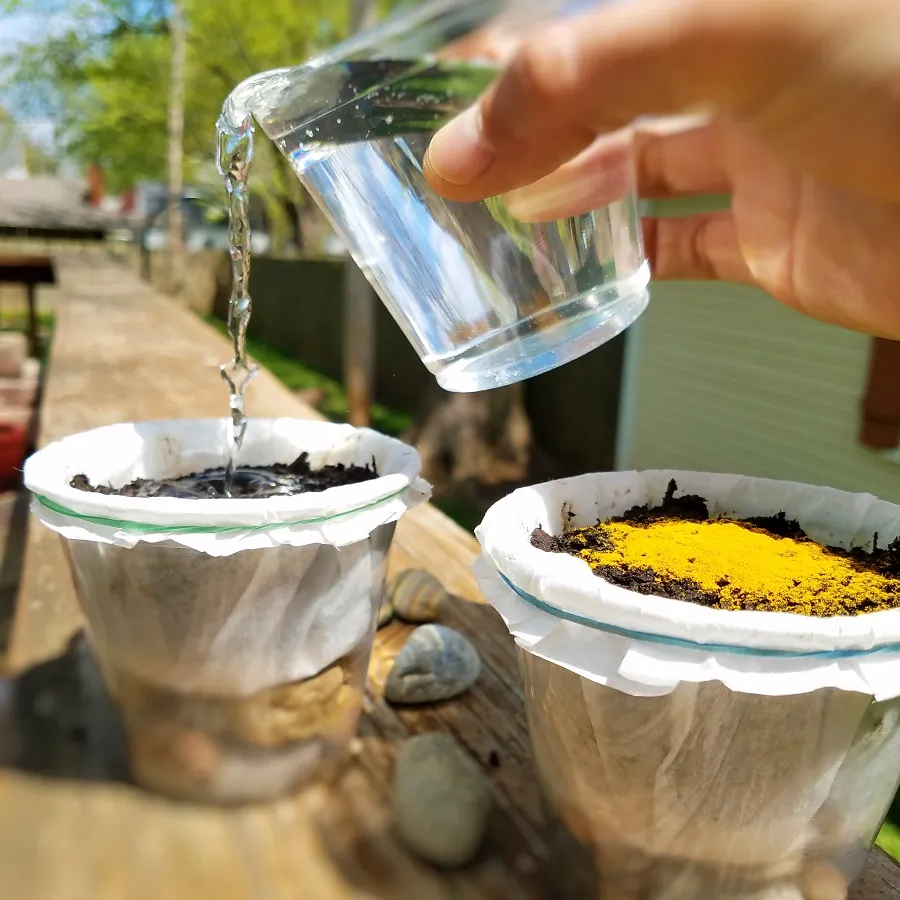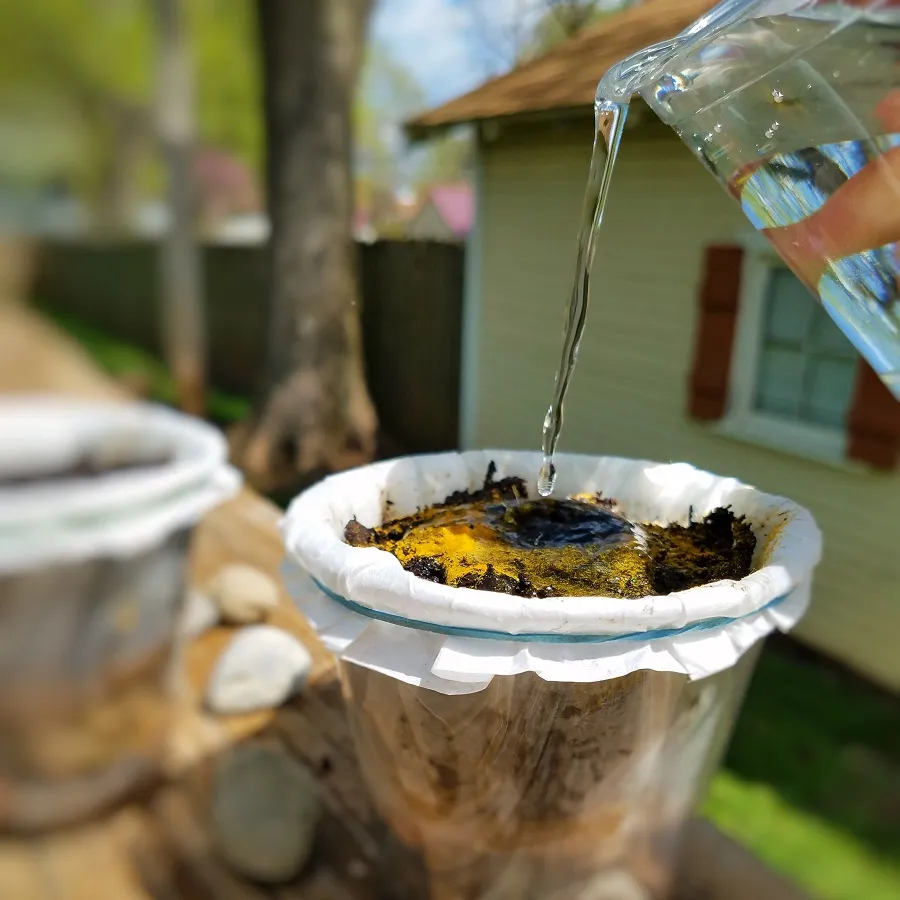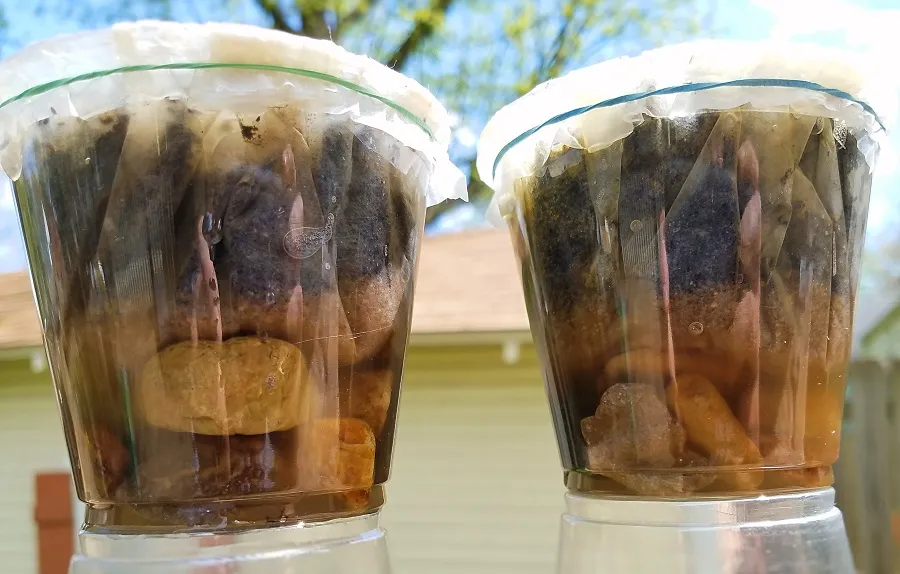Create Your Own Aquifer in a Cup to observe how water is stored underground

Create your own miniature aquifer in a cup. The limestone present in the Ozarks has cracks and voids that allow water to permeate and pass through it. Water flowing through the limestone passages of Fantastic Caverns, began as rainwater.
Understanding our water resources
Water resources include rainfall, snowmelt, streams, rivers, lakes, reservoirs, springs and groundwater. Groundwater is the water found beneath the Earth’s surface usually supplied by rainfall and snowmelt percolating into the soil within a watershed. Water follows the path of least resistance; as it moves underground, it saturates layers of sediment far beneath the surface. When enough water accumulates underground to provide a usable amount, it is called an aquifer. The upper surface of the water saturated layers of the Earth is called the water table. As water flows both above and below the surface, there are regional basins where water collects. These regional water collection basins are called watersheds.
The Ozarks region has a special kind of landscape known as karst
Karst is made when water seeps into the ground and dissolves soluble rock such as limestone and dolomite. To imagine what karst looks like below ground, picture a giant piece of Swiss cheese. Karst landscapes have many sinkholes, springs, caves, and losing streams (a losing stream is a stream or river that has water flowing into the ground through an opening in the riverbed). These types of features can be a direct path for groundwater contamination because they connect with underground water resources.
Understanding the potential of groundwater contamination in our karst landscape
Creating your own miniature aquifer
Supplies
- 2 small jars or cups
- Coffee filters
- Rubber Bands or string
- Rocks
- Sand
- Dirt
- Water
- Unsweetened drink mix, Food coloring or Turmeric

Instructions
- Create your own aquifer in a cup
- Place ¼”-½” diameter stones into the bottom of two cups or jars, about 1” high.
- Put coffee filters into your cups and secure them in place with rubber bands.
- Pour sand into the coffee filters about ¼”-½” deep.
- Pour dirt on top of the sand layer a few inches deep.
- Set one cup aside and on the surface of the dirt inside the other cup dump unsweetened drink mix, food coloring or turmeric. This will act as your pollutant.
- Pour small amounts of warm water into each cup, enough to saturate the sand layer.
- Observe the water that fills the voids between the rocks at the bottom.
*We’re planning to save the two aquifers we created in cups to use for another cave activity.

Discovering similarities and differences in your aquifers
We used turmeric to act as our pollutant, but using unsweetened drink mix or food coloring would create more disparity between the water in your aquifers. Observe your miniature aquifers as water is being introduced and after sediments have settled.
- Did the water in one cup look clearer than the water in the other?
- What are some similarities with the water?
- What are some differences with the water?

Protecting the quality of water is very important
As it rains and the rainwater moves through the watershed, it can pick up pollutants and deposit them into our water resources. There are two types of pollution.
- Point source pollution
- Non-point source pollution
Point source pollution comes from a single source, like chemicals being dumped into a stream. Non-point source pollution comes from multiple sources, like bacteria from waste, fluids from vehicles, sediment, pesticides and fertilizers. Non-point source pollution is the main type of pollution occurring in watersheds.
You can help protect our water resources and caves.
- Pick up trash
- Pick up after your pet
- Conserve water
- Plant native plants
- Don’t flush things down your sink or toilet
- Spread the word

Going with the flow at Fantastic Caverns
The limestone bedrock present in the Ozarks isn’t solid rock, but rock that is filled with cracks, cavities, and passages that allow water to move through it. The Ozarks are the perfect example of karst topography. Karst is a German word for the limestone region in Europe north of Trieste, Italy, that includes southwestern Slovenia. As rain falls in a karst region, water from the surface drains into the ground through cracks in the bedrock. As water percolates through the ground, it further dissolves the limestone along the cracks in the rock, eventually creating caves. This process is known as dissolution.
Fantastic Caverns was formed by the flow of an underground river and its passages were once filled with water. Today, the cave’s lower passageways fill with water when it rains. But when enough rain falls within the watershed, water will overflow the lower levels of the cave and spill into the upper, toured portion of Fantastic Caverns. The overflow occurs when the volume of water is too great to easily flow out to the surface. Water that flows through Fantastic Caverns began at the surface as rainwater. The watershed, or recharge area, is located to the south and west of the cave. When rain falls in this area, we can expect the flow of water through the lower levels of Fantastic Caverns to increase.
By using a special dye to trace the movement of water, it was discovered that the recharge area of Fantastic Caverns is about 15-square miles. Fantastic Caverns’ recharge area or watershed includes the Springfield-Branson National Airport; a variety of family farms; as well as residential, commercial and industrial developments. The wide-range of activities taking place above ground in the Ozarks directly affects the ecosystem below ground and our groundwater. Fantastic Caverns is home to three species of rare and threatened animals that depend on clean groundwater to survive. The watershed that supplies water to Fantastic Caverns, is also the water supply for over 1,000 neighborhood wells. Clean water is important to ALL life.
About the Author

Director of Marketing
Hubert Heck is the Director of Marketing for Fantastic Caverns